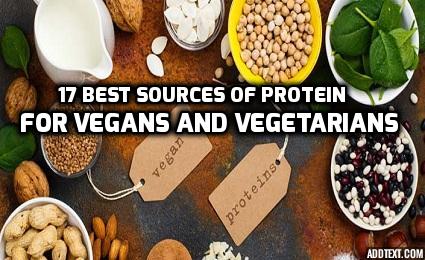A general concern about vegan and vegetarian diets is that these diets may lack sufficient protein. This is why many diet experts agree that a well-planned vegan or vegetarian diet can provide us with all the nutrients we need. So, I am sharing these 17 Best Sources of Protein for Vegans and Vegetarians.
They said certain plan foods contain naturally more protein than others. Vegans and vegetarians are high in protein and also promote muscles strength, weight loss, and satiety.
5 Days Fat Loss Accelerate – Get Result Every Time You Work Ou
-
Seitan
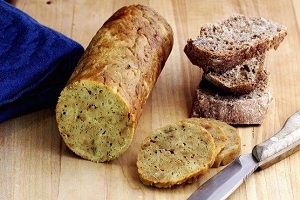
Seitan is one of the popular protein sources for many vegans and vegetarians. It is made up from gluten, which the main protein in wheat. Unlike some soy-based mock meats, it features the texture and looks of meat when it cooked.
It is also known as wheat gluten or wheat meat. It contains about 70 grams of protein per 7 ounces (200 grams). This is the reason seitan is the richest plant protein source in my list.
Seitan is also a good source of selenium and it also contains a small amount of calcium, iron phosphorus. You can count is a meat alternative in the freezer section of many health food stores and can also make your own version with vital wheat gluten.
Seitan can be sauteed, pan-fried and even grilled. This is the reason; it can be easily integrated into varieties of dishes.
However, seitan should be totally ignored by the people with gluten sensitivity or celiac disease.
Conclusion:- Seitan is a mock meat which is made up from wheat gluten. It is a high protein rich content with the meat like versatility and texture. This is the reason it is a highly popular plant-based protein choice among many other vegans and vegetarians.
-
Tofu, Tempeh, and Edamame
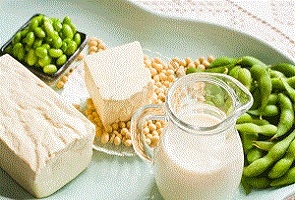
Tofu, tempeh, and edamame all made up from soybeans.
Soybeans are treated as a complete source of protein, which means they provide our body all the important amino acids which our needs. Edamame is immature soybeans which are slightly grassy and sweet in taste. They need to be boiled or steamed first before consumption and can be added in salads and in soups.
Tofu is made up from the curds which are pressed together in a process identical to cheese making. Tempeh is made up by cooking and slight fermenting mature soybeans prior to pressing them into the patty.
Tofu does not have any taste, but it absorbs the flavor of ingredients easily. On the other side, tempeh has a characteristic nutty flavor. Both the tempeh and tofu can be used in various recipes from snacks, soups to chilies.
All the 3 types contain calcium, iron and 40 grams of protein in 7 ounces (200 grams)
Edamame is also the good source of vitamin K, folate and fiber. Tempeh contains a good amount of B vitamins, probiotics and minerals like phosphorus and magnesium.
Conclusion:- Tofu, tempeh, and edamame all come from soybeans which are a complete source of the protein. All these also contain a good quantity of various other nutrients which can be used in different types of recipes.
Click Here to Read:- Review of the 12 Things Which Increase Belly Fat Rapidly
-
Lentils

Lentils contain 35 grams of protein in 450 ml per cooked cup, these are the great source of protein. These lentils can be used in various dishes from soups to salad and spice infused dahls.
Lentils contain the huge amount of slowly digested carbs, a single of 250 ml provides us around 50% of a fiber of our daily intake. Moreover, the type of fiber found in the lentils feed the good bacteria in our colon which gives us a healthy gut. Lentils can also help in the reduction of risk of excess body weight, diabetes, heart attacks and a few various types of cancer.
In addition to this, lentils are a rich source of manganese, folate, and iron. Lentils also contain a decent amount of antioxidants and other health promoting compounds
Conclusion:- Lentils are a powerhouse of nutritions. They are good in protein which contains the decent amount of some other nutrients too, which helps in the reduction of various diseases.
-
Chickpeas and Most Varieties of Beans
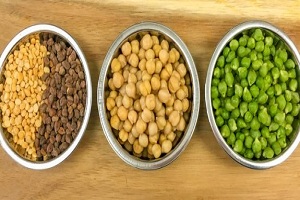
Pinto, black and kidney and most of the other varieties of beans contain the high amount of proteins in each serving.
Chickpeas are also known as garbanzo beans which are another type of legume with the content of high protein. Both chickpeas and beans contain around 30 grams of protein in per cooked of 480 ml. they are a good source of complex carbs, iron, phosphorus, manganese, fiber, folate, potassium, and various other beneficial plant compounds.
Furthermore, various studies show that diet rich legumes and beans can help in decreasing the cholesterol, lower blood pressure, control blood sugar and even helps in the reduction of belly fat.
You should add beans in your diet by making tasty dishes or can enjoy the extra health benefits by seasonings over roasted chickpeas.
Conclusion:- Beans are protein packed, health-promoting legumes which contain the variety of minerals, vitamins, and beneficial plant compounds.
Click Here to Read:- 10 Natural Home Remedies for Bad Breath that actually Works
-
Nutritional Yeast
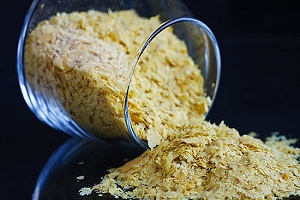
Nutritional yeast is a deactivated strain of the Saccharomyces cerevisiae yeast which is sold commercially as a yellow flake or powder. It is cheesy in flavor, and that makes it a famous ingredient in dishes like scrambled tofu and mashed potatoes. Nutritional yeast can also be sprinkled on top of the noodles, pasta dishes and even as a topping on popcorn.
This is a complete source of plant protein which provides the body 27 grams of protein and 14 grams of fiber in 56 grams.
Fortified nutritional yeast is a perfect source of magnesium, manganese, copper, zinc, B12 vitamins and all the B vitamins.
Conclusion:- Nutritional yeast is a famous plant-based ingredient which is often used in dishes dairy-free cheese flavor. It is a rich source of fiber, protein and often fortified with various nutrients including vitamin b12.
-
Spelt and Teff
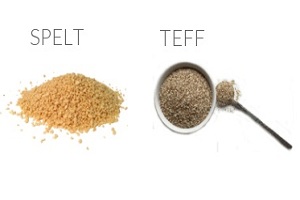
Spelt and teff is known as an ancient grain, it includes barley, farro, einkorn, and sorghum. Spelt is a type of wheat which also contains gluten in it, whereas teff comes from an annual grass which means it is free from gluten.
Spelt and teff both together provides 22-22 grams of protein when completely cooked of 480 ml, these are high in protein as per compare to other ancient grains. Both of them are the perfect source of nutrients which includes complex carbs, iron, phosphorus, magnesium, fiber, and manganese. Both of them also contains the decent amount of selenium, B vitamins, and zinc.
Both spelt and teff are adaptable alternatives of common grains like rice and wheat. It can also be used in various recipes from risotto, polenta to baked foods.
Conclusion:- Spelt and teff are the huge source of protein in ancient grains. They are also a good source of various minerals and vitamins and delightful alternative to some common grains.
Click Here to Read:- 17 Stretches and Exercises to find Relief from Neck Pain
-
Hemp seeds
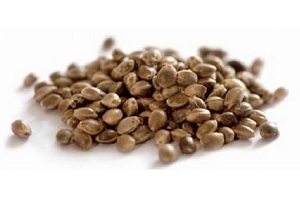
Hempseed comes from the cannabis sativa plant, and that plant is very famous as it is belonging to marijuana plant family. But it is also good that it contains only a very few amounts of THC, the compound which produces the drug effects like a marijuana.
This hemp seed contains 20 grams of complete protein which is easily digestible per 60 grams. Its protein source is 50% more than flax seeds and chia seeds. Hemp seed also contains a decent amount of iron, selenium, magnesium, zinc, and calcium. It is also a decent source of omega-6 fatty acids and omega-3 in the ratio treated for human health.
Interestingly, some research gives that the type of fats found in the hemp seed can help in the reduction of the inflammation, as well as diminishes symptoms of PMS, certain skin diseases and menopause.
You can also add hemp seed to your diet by sprinkling some of the amounts to your morning muesli or in the smoothie. You can use it in your protein bars and in homemade salad dressing.
Conclusion:- Hemp seed contains a decent quantity of complete, highly digestible proteins, as well as health-promoting essential fatty acids in an excellent ratio for human health.
-
Green Peas
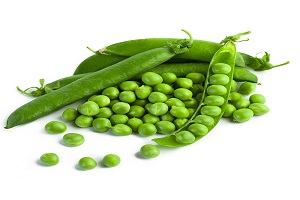
This small green peas often served as cooked vegetables as a side dish which contains 18 grams of protein in 480ml of an amount.
A single serving of green peas contains more than 25% of your daily vitamin A, C, K, thiamine, manganese, fiber and folate requirements.
Green peas are also a decent source of magnesium, zinc, iron, copper, phosphorus and various other B vitamins.
Conclusion:- Green peas are high in vitamins, proteins and in minerals and can be used easily as more than just a side dish.
-
Spirulina
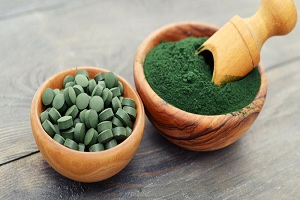
These blue-green algae are purely a powerhouse of nutrition. Four tablespoons of around 60ml will provide you with 16 grams of protein. This will also cover 20% of your daily requirements of thiamin and iron and 40% of your daily need of copper.
Spirulina also contains the good amounts of riboflavin, potassium manganese, manganese and a short amount of most of the nutrients which are required for the need of your body, which also includes essential fatty acids.
Phycocyanin, which is a natural pigment found in the spirulina, and that appears to have a powerful anti-inflammatory, antioxidant and anti-cancer properties.
Moreover, researches show that taking spirulina gives you so much benefit by helping to make your immune system stronger and reduction of blood pressure to improve your cholesterol and blood sugar levels.
Conclusion:- Spirulina is a high protein food with so many nutritious elements and many other benefits for health-enhancing properties.
Click here to read:- Did You Know These 10 Natural Home Remedies for the Treatment of Burns
-
Amaranth and Quinoa
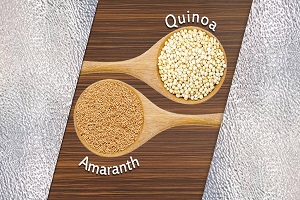
Amaranth and Quinoa both referred as an ancient or gluten-free grain, but both do not from grasses as other cereals grains grow. This is the reason both of them technically considered as “pseudocereals.”
Still, both can be ground or prepared into flour like other common known grains. Amaranth and Quinoa both provide 18 grams of protein per cooked of 480 ml and also a complete source of protein, which is very rare among pseudo-cereals and grains.
Both Amaranth and Quinoa are also a good source of complex carbs, manganese, magnesium, iron, phosphorus, and fiber.
Conclusion:- Amaranth and Quinoa are pseudo-cereals which provide you with a complete source of protein. They can also be eaten and prepare similar to the tradition grains like rice and wheat.
-
Bread Made From Sprouted Grains
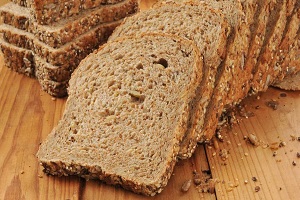
Ezekiel bread is made up from organic, legumes and sprouted whole grains. These include millet, spelt, wheat and barley, it also contains lentils and soybeans. 2 slices of the Ezekiel bread approximately contains 7 grams of protein, which is a bit more than average bread.
Sprouting legumes and grains increase the number of healthy nutrients which contains and reduces the amount of the anti-nutrients in them.
In addition to this, research also shows that sprouting increases the content of amino acid in it. Lysine is the limiting amino acid founds in many plants and sprouting also increase the content of lysine. It helps to boost the quality of overall protein.
Equally, combining of legumes with grains could further improve the amino acid of the bread. Sprouting also increases the soluble fiber, vitamin C, Vitamin E, folate and beta-carotene of the bread. It also reduces the content of gluten which can enhance the digestion in those who are sensitive of gluten.
Conclusion:- Ezekiel and other pieces of breads are made up from sprouted grains and having enhanced protein and nutrients profile also, as per compare to more of the traditional types of bread.
-
Soy Milk
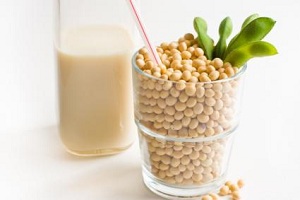
Milk which is made up from soybeans and fortified with the minerals and vitamins are a great alternative of cow’s milk. It does not just contain 15 grams of protein in 480 ml, but it is also a great source of vitamin D, vitamin B12, and calcium.
However, you should keep this thing in your mind that soybean and soy milk does not contain vitamins B12 naturally, so it is recommended to pick the fortified variety.
You can found soy mostly in the supermarkets and in the retails shops in the shopping mall. It is a great versatile product which can be consumed by its own or you can add them baking and cooking recipes.
It’s is a great idea to opt soy milk for unsweetened varieties to keep the amount of added sugars to the minimum.
Conclusion:- Soy milk is high in protein as per compare to cow’s milk. You can use these soy milk varieties of the cooking and baking recipes.
-
Oats and Oatmeal
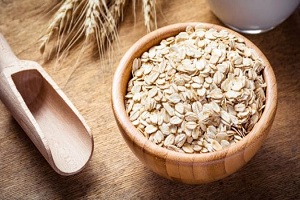
Oats are easy to make and delicious in taste diet which is also a great source of protein. 250 ml of dry oats can give us approximately 12 grams of protein and 8 grams of fiber. This amount also contains the decent amount of zinc, folate, phosphorus, and magnesium.
Although oats are not counted as a complete protein, they do contain high quality of protein than other normally consumed grains like wheat and rice. You can also use oats in different recipes from oatmeal to vegetarian burger.
Conclusion:- Oats are not just only nutritious but can also easy and delicious ways to incorporate plant protein into a vegetarian or vegan diet.
Click here to read:- 10 Early Symptoms Which Gives Direct Signs of Alzheimer
-
Wild Rice
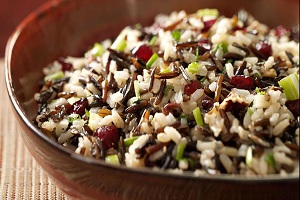
Wild rice normally contains 1.5 times more protein than any other long grain rice varieties, including basmati and brown rice.
480 ml of wild rice contains 14 grams of protein, in addition to a decent amount of manganese, copper, phosphorus, fiber, magnesium and B vitamins. Unlike white rice, wild rice is not stripped with of its bran. This is good from a nutritional perspective, as bran contains fiber and plenty of minerals and vitamins.
Washing wild rice with plenty of water before cooking can reduce the arsenic content in them, which is good for us, as arsenic is an element of toxic which can rise various types of health problems, especially when consuming them regularly for long period.
Conclusion:- Wild rice is good in taste and also a good source of a nutrient rich plant. Those who are eating wild rice regular or occasionally to, must take precautions to reduce the arsenic level contains by them.
-
Chia Seeds
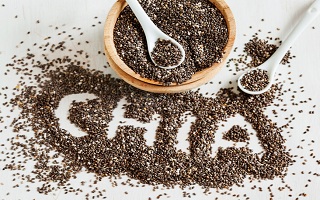
Chia seeds are derived from the Salvia hispanica plant, which is native to Guatemala and Mexico. You can easily get 12 grams of protein and 26 grams of fiber from around 70 grams of chia seeds; this is the reason chia seeds deserve to get the spot in this list.
You can also get a decent amount of calcium, magnesium, selenium, and iron as well as antioxidants, omega 3 fatty acids, and some other beneficial plant compounds from these small seeds.
Chia seeds taste boring bye they are able to absorb the water and turning them into a substance like gel. This is the reason it can easily add to different varieties of recipes from baked good to smoothies and chia seed puddings.
Conclusion:- Chia seeds are a grateful source of plant-based protein. These seeds also contain the variety of vitamins, antioxidants, minerals and some other compounds which help in promoting health upside.
Click here to read:- 9 Causes And Treatment Of Laziness And Fatigue
-
Nuts, Nut Butters and Other Seeds
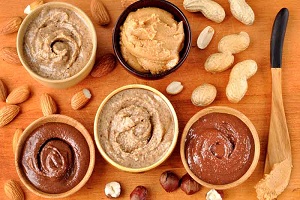
Seeds, nuts and their derived products are the good sources of the protein. Around 55 grams of them contains 14 grams of protein. Amount of protein also depends on the variety of seeds and nuts.
Seeds and nuts are also a good source of healthy fats and fiber. It also contains calcium, selenium, magnesium, phosphorus, iron, Vitamin E and certain B vitamins.
You should this thing in your mind before choosing any seeds or but before buying it that roasting and blanching may damage the nutrients components in the nuts. So, whenever possible you should go for raw and unblanched Verizon of nuts and seeds.
You also go for natural types of butter to avoid the excess salt, sugar, and oil which is often added to most of the household branded varieties.
Conclusion:- Seeds, nuts and the butter in them are the easy ways to add minerals, vitamins and plant protein to your diet. It is good to eat them unblanched, raw and no other additives to maximize their content of nutrient.
-
Protein-Rich Fruits and Vegetables
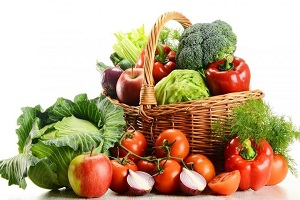
All the fruits and vegetables are a good source of protein, yes the usual amount of protein is less, but still, they contain protein. But, there are few vegetables available which contain the good amount of protein like spinach, artichokes, sweet potatoes, broccoli, asparagus, potatoes, brussels sprouts.
Fresh fruits normally are having a lower protein as per compare to vegetables. Fruits which contain most of the protein are cherimoyas, nectarines, guava, banana, blackberries, and mulberries which are having around 5 grams of protein per serving.
Conclusion:- There are certain vegetables and fruits which contains more protein. That would be great for you if you add them in your daily meals for your protein intake.
Click here to read:- Top 10 High Calorie Foods For Weight Gain
Take Home Message
Deficiency of protein among vegans and vegetarians may vary from person to person. However, there are few peoples might be interested in increasing their plant protein intake for a variety of the reasons.
The above-given list 17 Best Sources of Protein for Vegans and Vegetarians can be used a guide note for anyone who is interested in incorporating more plant-based protein into their diet.
Metabolic Cooking – Read This before Buying 100% Genuine Review

